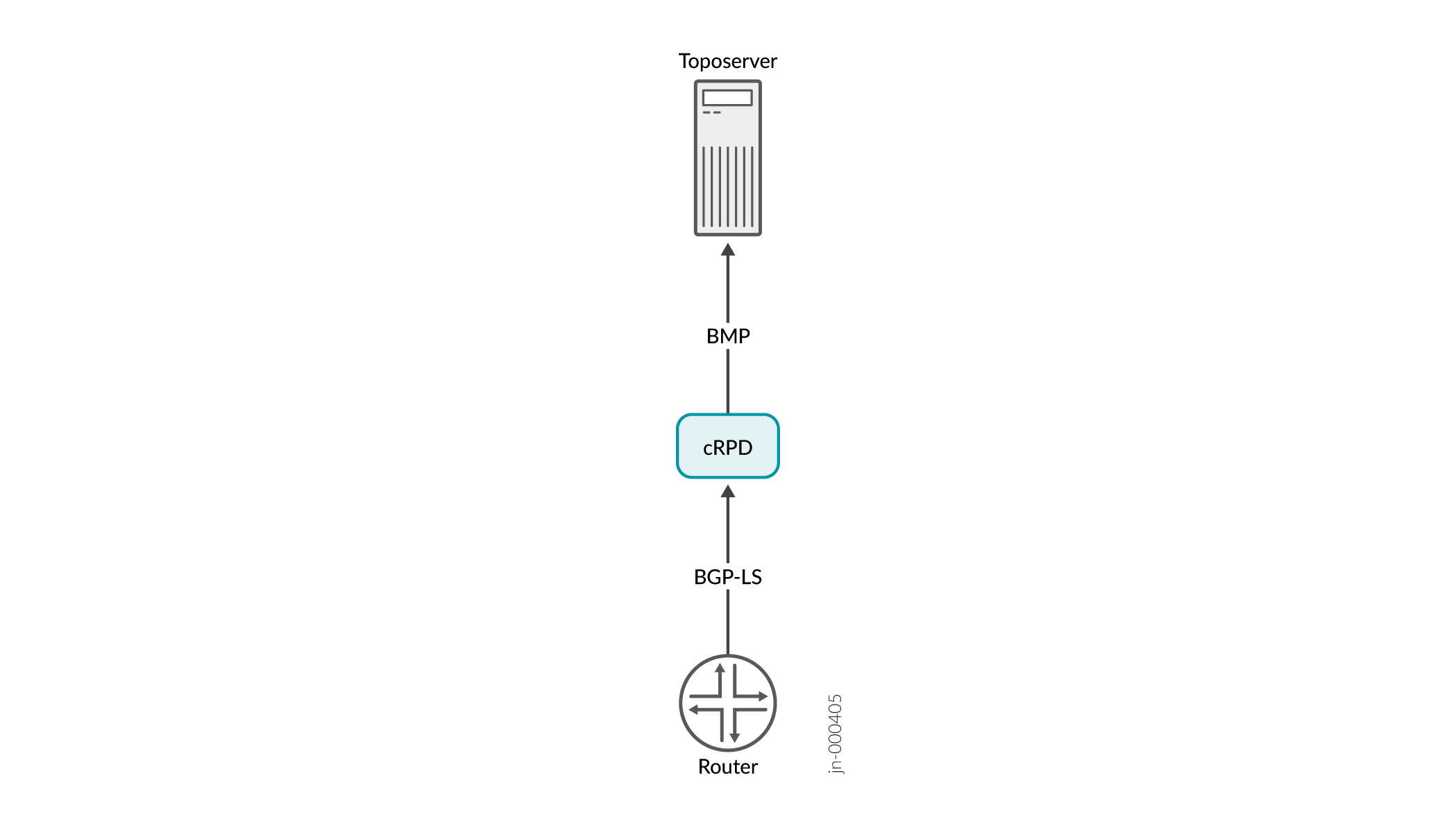Topology Not Displayed in the GUI
Problem
The Topology page (Network > Topology) does not display the topology.
Solution
The topology appears on the Topology page only if the topology server (Toposerver) receives information from the router.If the topology does not appear on the Topology page, it is likely that the flow of information from the router to the Toposerver was interrupted. To resolve the problem, you must identify where this flow was interrupted and prevent further interruption. Figure 1 illustrates the flow of information from the router to the Toposerver.
The topology originates at the routers. For Paragon Pathfinder to receive the topology, you must establish a BGP-LS session from one of the routers in the network to the containerized routing protocol process (daemon) [cRPD]. Ensure that a BGP Monitoring Protocol (BMP) session is already established between cRPD and the Toposerver.

To check these connections, do the following:
-
To verify that the Toposerver successfully established a BMP connection with cRPD, do the following:
-
Using your server credentials, log in to the primary node of Paragon Automation.
-
From the primary node, use the following command to obtain the name of the pod associated with the Toposerver process:
kubectl -n northstar get pod | grep topo
-
Use the following command to log in to the Toposerver pod:
kubectl -n northstar exec -it ns-toposerver-pod-name -c ns-toposerver -- bash
-
Use the following command to verify that the Toposerver successfully established a BMP connection with cRPD through port 1002:
netstat -na | grep :1002
The following example output indicates that the connection was successfully established:
tcp 0 0 172.16.16.1:55752 172.16.16.2:1002 ESTABLISHED
-
-
BMP is configured automatically on cRPD during the installation of Paragon Automation to enable the topology export. To confirm that the configuration is present on cRPD, do the following:
-
From the primary node, log in to cRPD by using the following command:
pf-crpd
-
Use the following command to confirm whether BMP is configured:
show configuration routing-options
If you see output similar to the following, it indicates that BMP is configured:
root@bmp-pod-name> show configuration routing-options autonomous-system 64512 bmp { local-address local-ip-address; local-port port-number; connection-mode passive; monitor enable; station localhost { station-address ip-address; } } static { route 0.0.0.0/0 next-hop next-hop-ip-address; }
If the BMP configuration is missing, configure BMP. See the Junos OS documentation for details.
-
-
Use the Junos OS
showcommands to confirm whether the BGP-LS session between cRPD and the router is ACTIVE. If the session is not ACTIVE, the router cannot send the topology information to cRPD. -
From cRPD, use the following command to verify whether the lsdist.0 routing table has any entries:
show route table lsdist.0 hidden
If you see output similar to the following, it indicates that the lsdist.0 routing table has entries:
lsdist.0: 54 destinations, 54 routes (0 active, 0 holddown, 54 hidden)
Ensure that at least one link exists in the lsdist.0 routing table. The Toposerver can create an initial topology only if it receives at least one BMP link event. A network that consists of a single node with no interior gateway protocol (IGP) adjacency with other nodes will not enable the Toposerver to create a topology. For example, in a lab environment, the network may not have IGP adjacency established with other nodes.
Figure 1 illustrates the Toposerver's logical process for creating the initial topology.
Figure 2: Logical Process for Initial Topology Creation
If the Toposerver cannot create an initial topology, it generates a log entry similar to the following example:
Note:The logs that you view may differ from the logs in this document. The logs change based on the installed version of Paragon Automation.
Dec 9 16:03:57.788514 fe-cluster-03 TopoServer Did not send the topology because no links were found.
If the Toposerver cannot create an initial topology, you must re-synchronize the network model from the Pathfinder page (Configuration > Network Settings > Pathfinder Settings > Advanced Settings) in the GUI to obtain the topology. See Synchronize the Network Model for details about re-synchronizing the network model.
